- News
- Reviews
- Bikes
- Components
- Bar tape & grips
- Bottom brackets
- Brake & gear cables
- Brake & STI levers
- Brake pads & spares
- Brakes
- Cassettes & freewheels
- Chains
- Chainsets & chainrings
- Derailleurs - front
- Derailleurs - rear
- Forks
- Gear levers & shifters
- Groupsets
- Handlebars & extensions
- Headsets
- Hubs
- Inner tubes
- Pedals
- Quick releases & skewers
- Saddles
- Seatposts
- Stems
- Wheels
- Tyres
- Tubeless valves
- Accessories
- Accessories - misc
- Computer mounts
- Bags
- Bar ends
- Bike bags & cases
- Bottle cages
- Bottles
- Cameras
- Car racks
- Child seats
- Computers
- Glasses
- GPS units
- Helmets
- Lights - front
- Lights - rear
- Lights - sets
- Locks
- Mirrors
- Mudguards
- Racks
- Pumps & CO2 inflators
- Puncture kits
- Reflectives
- Smart watches
- Stands and racks
- Trailers
- Clothing
- Health, fitness and nutrition
- Tools and workshop
- Miscellaneous
- Buyers Guides
- Features
- Forum
- Recommends
- Podcast
feature
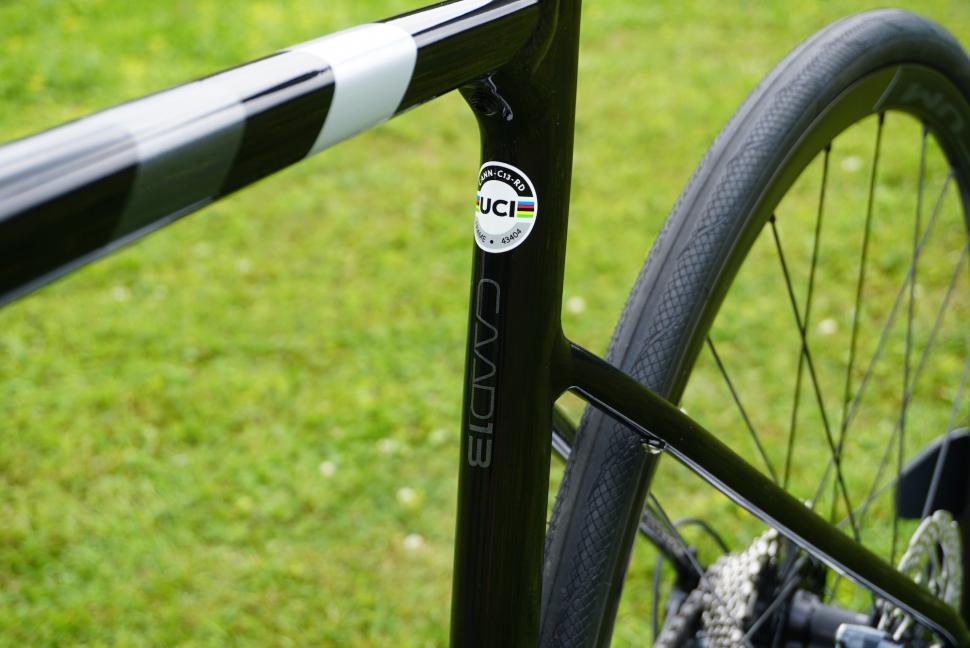 cannondale caad1330.JPG
cannondale caad1330.JPGWhat are dropped seatstays good for? Should you get a bike with them?
Trends come and go in the bike world. One that won’t have escaped your notice is the dropped seat stay design. But why are all the bike companies at it?
Rewind the clock a couple of decades and all road bikes were made from skinny steel tubes with a double diamond design. Then along came Mike Burrows in the 1990s and, with Giant Bicycles, introduced the radical compact frame design dubbed TCR. Key to this design was a small rear triangle providing weight and stiffness benefits.
It took a long while for the design to be accepted but it has now influenced most modern bike designs. While it didn't have radically dropped seat stays like we're seeing today, it did lay the foundations.
We don't know who really started the trend for dropped seat stays, but Swiss brand BMC is often credited with doing it first on the Impec, a futuristic carbon frame designed and built by robots. BMC's main reason for dropping the rear stays was to provide more ride comfort with improved lateral stiffness.
“On the impec as well a lower-slung seat stay and special flex zones in this area provide for the typical BMC mix of ride comfort with lateral stiffness and absolute handling precision. The low seat stay is a feature that you very quickly learn to value, especially on longer tours and the worst kinds of roads," explained BMC at the Impec launch. This design study has influenced all BMC road bikes since.
How popular is this trend?
We've been seeing a lot of new bikes launched this year with dropped seat stays, suggesting we're clearly in the midst of a new trend. We wanted to put some numbers on this increased popularity so partnered with 99 Spokes, a bike comparison website, to crunch some numbers. The results make for interesting viewing.
| Year | Total | Dropped | Standard |
| 2015 | 147 | 6 | 141 |
| 2016 | 126 | 9 | 117 |
| 2017 | 208 | 25 | 183 |
| 2018 | 242 | 38 | 204 |
| 2019 | 348 | 81 | 267 |
| 2020 | 94 | 30 | 64 |
The data for 2020 model year bikes is not complete yet, but even allowing for that incomplete data set it's clear the number of bikes with dropped seat stays has only increased in popularity. It doesn't show any sign of replacing traditional seat stay designs just yet though.
"This has been an interesting trend to watch in recent years; particularly in that it’s not limited to a subset of cycling disciplines, but appears across a wide range from gravel to road racing. Also worth noting is the parallel trend towards disc brakes. Road bikes with dropped seat stays and rim brakes can be found, but we do see a much stronger correlation between dropped seat stays and disc brakes. Frame designers may be afforded greater flexibility in the positioning of the seat stays when they don’t need to accommodate a rear rim brake mount," commented Scott at 99Spokes.
Comfort matters
Comfort is a key reason for lowering the seat stays on a road bike then. Road bikes have gotten incredibly light and stiff since the early days of carbon fibre development, probably to the point it’s going to take a major leap in material development for any more major gains in these areas.
But our roads aren’t getting any smoother, and so bike designers have started focusing on comfort.
Along with increasing tyre clearance, frame design has been a key target for achieving more of compliance. That's the ability of the bike to cushion you, to an extent, from the vibrations and impacts generated when riding over rough roads.
There has been greater demand for bikes that combine the speed and performance of a pro race bike but are easier to live with on poorly surfaced and maintained roads. It’s given rise to the huge popularity of endurance road bikes. Bikes designed to be comfortable yet fast, stiff and light.
Bike designers point towards a smaller rear triangle, achieved by dropping the seat stays further down the seat tube, as a way of increasing comfort. When the saddle is pushed down, it flexes the seat post and this, in turn, tries to bend the seat tube. Lowering the point at which the seat stays meet the seat tube allows the seat tube to bend more, increasing the range of movement at the saddle.
It’s not just endurance bikes that are getting this comfort focus. Even the latest race bikes from the big brands are going down the same route. There was some controversy when Cannondale unveiled its brand new SuperSix Evo, a bike that had held onto a traditional frame design, with dropped seat stays.
According to Cannondale, the new Evo bests the previous bike provides an 18% improvement in compliance compared to the previous model. That's not just down to the stays, but also the seat post and new internal seat clamp.
Aero matters too
It's not all about comfort. Bike designers also claim aerodynamic improvements from the compact rear triangle created by the dropped rear stays. Dropped stays have become almost commonplace on aerodynamic, where they first appeared, to regular all-round road race bikes getting the same treatment.
Ribble’s Head of Product Design Jamie Burrow lists numerous benefits. "The benefits over a traditional rear triangle are: (1) more aerodynamic flow from stays to the rear wheel; (2) the seat tube offers seat post compliance for a more comfortable ride; (3) smaller triangles are stiffer, keeping the rear triangle stiffer and maintaining power transfer to the back wheel."
Specialized adopted the dropped seat stay design many years ago. The second-generation Venge aero road bike introduced them to the aero line, and the sixth-generation Tarmac road bike got the same dropped seat stay treatment. On this bike, Specialized lists the dropped stays, along with other changes, as contributing to the new bike being 45 seconds faster over 40km compared to the old model.
Colnago has resisted the trend, taking a more traditional approach to frame design, but that said it's latest aero road racer the V3RS has incorporated the dropped seat stays. Colnago’s designer Davide Fumigalli says there are benefits to dropped stays, but adds that they’re not always the right solution.
“We started dropping the seat stay a few years ago with the K-zero (mainly for Aerodynamic purpose) and C-rs (comfort and side stiffness) but then we didn’t use this option for V2 and C64. It’s not the ultimate solution to anything, sometimes it works, sometimes not,” he explains.
"It’s always about what are you looking for…for this project [V3RS] we think the “slightly dropped” seat stay is the correct balance."
Alternative solutions
It's obviously creating bikes that look largely the same. And many people aren’t fans of the aesthetic of the dropped stays. But tradition has rarely stood in the way of technological progress in the cycling world, aside from the UCI rule book. And aero has become the biggest focus for many bike brands, especially those with demanding pros to cater for.
There is a limit to how much vertical compliance can be built into an otherwise stiff frame. No wonder some bike companies are looking at more radical solutions to meeting the demands of comfort and aerodynamics.
Trek's IsoSpeed negates the dropped seat stays for a clever design that decouplers the seat tube from the rest of the frame so it's free to flex back and forth. Cannondale has added pivots to its Topstone Carbon gravel bike along with dropped stays to increase the comfort. Specialized meanwhile drops a seat post into an oversized seat tube to increase the range of deflection.
Then, of course, there is the increased tyre size that nearly all new bikes are now capable of being fitted with.
It's not just road bikes. Gravel, adventure and all-road bikes are taking it too another level. Cannondale’s Topstone Carbon is perhaps the ultimate expression of this idea. By placing a pivot bearing at the seat stay and seat tube junction, it aims to increase the degree of bending force at the seat tube to offer, in its words, up to 30mm of compliance.
Summary
But do drop seat stays really make a dint of difference? Here at road.cc, we’ve ridden hundreds of the latest bikes over the last decade, and performance, when measured across all metrics, has definitely improved. They feel faster, more efficient and more comfortable. But pinning all those improvements to the dropped seat stays is an impossible conclusion to draw.
In a market where the designers are chasing the same goals and limited by the same rule book, there are only so many avenues bike designers can explore. It seems the dropped seat stays achieves the desired increased comfort and less tangible aerodynamic improvement, and as a result, are here to stay.
Is it a bad thing or just another phase in the evolution of the road bike? Time to hand over you you so let us know what you think below.
David worked on the road.cc tech team from 2012-2020. Previously he was editor of Bikemagic.com and before that staff writer at RCUK. He's a seasoned cyclist of all disciplines, from road to mountain biking, touring to cyclo-cross, he only wishes he had time to ride them all. He's mildly competitive, though he'll never admit it, and is a frequent road racer but is too lazy to do really well. He currently resides in the Cotswolds, and you can now find him over on his own YouTube channel David Arthur - Just Ride Bikes.
Latest Comments
- Aluminium can 2 hours 14 min ago
Its not a booby trap as it says clearly right on the side the outcome of cutting it. The same as aerosol paint cans have warnings not to...
- eburtthebike 2 hours 34 min ago
A comedian with a purpose can achieve more than the politicians e.g. Zelesky.
- Hirsute 4 hours 10 min ago
Sounds a bit specific though given 90% are bought on some sort of finance.
- Rekrab 4 hours 28 min ago
MORE LANES, MORE LANES!!!!
- Simon E 4 hours 35 min ago
The numbers don't tell anything like the whole story....
- Simon E 5 hours 6 min ago
Just squirt some thick grease all over his side windows and door panels. If you're feeling really uncharitable you could throw some sand at the...
- David9694 5 hours 46 min ago
check under 'W'for "What cars do to people"
- Global Nomad 6 hours 28 min ago
good to see you're testing the farsports wheels - hope to see road.cc continue to expand the range of brands it considers. These or the shallower...
- chrisotherwise 7 hours 1 min ago
Sadly very normal. And the sand contains loads of evil little shards of flint.


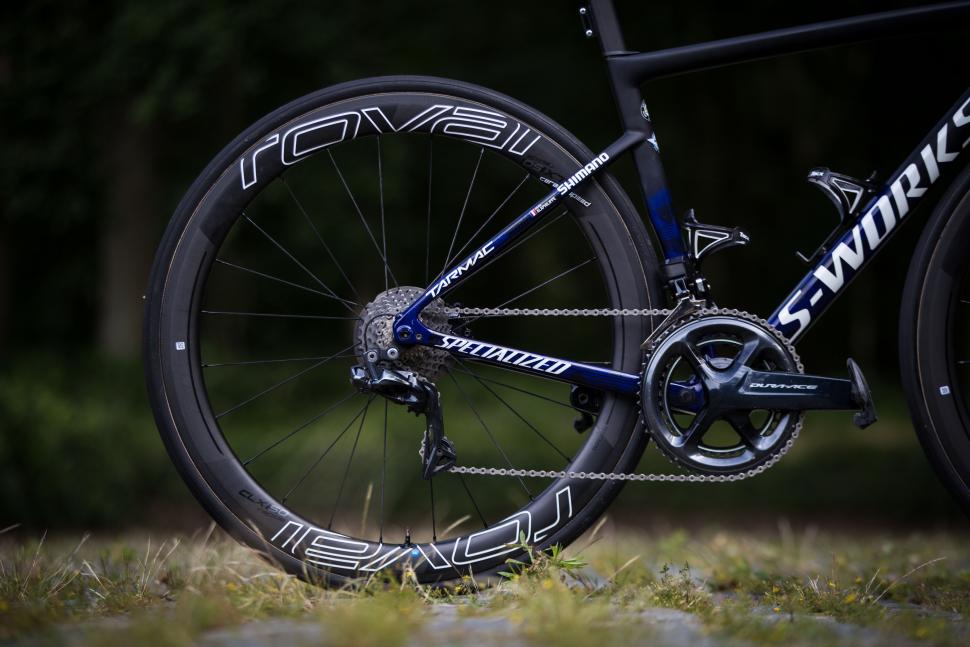
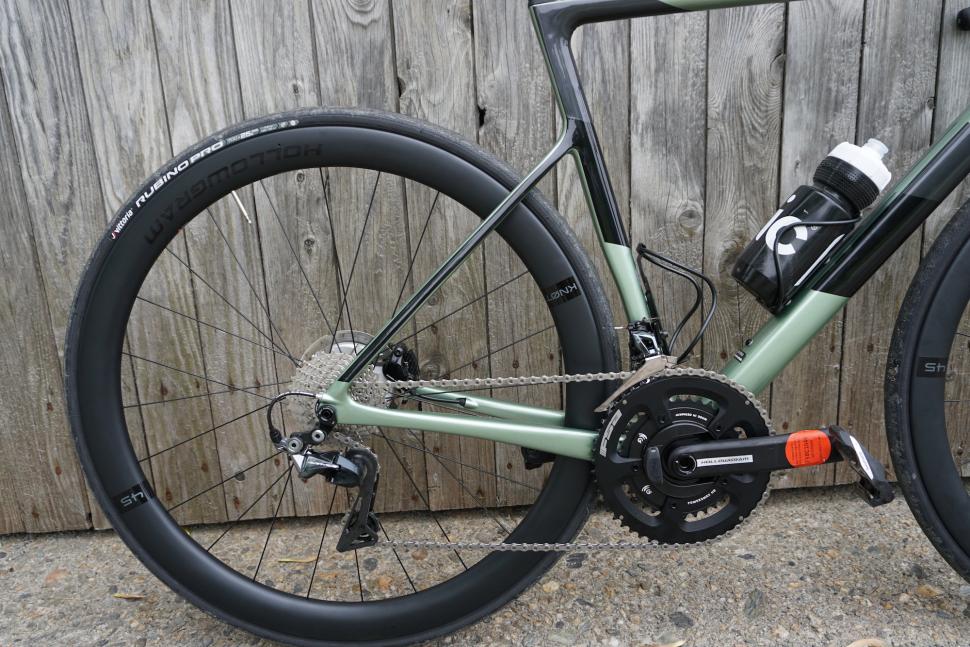

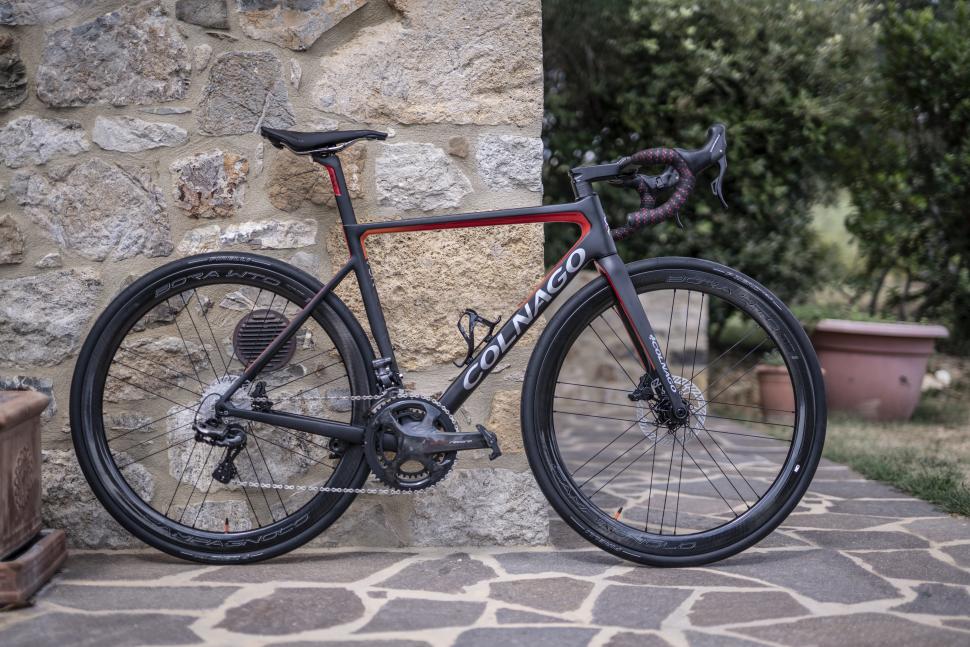

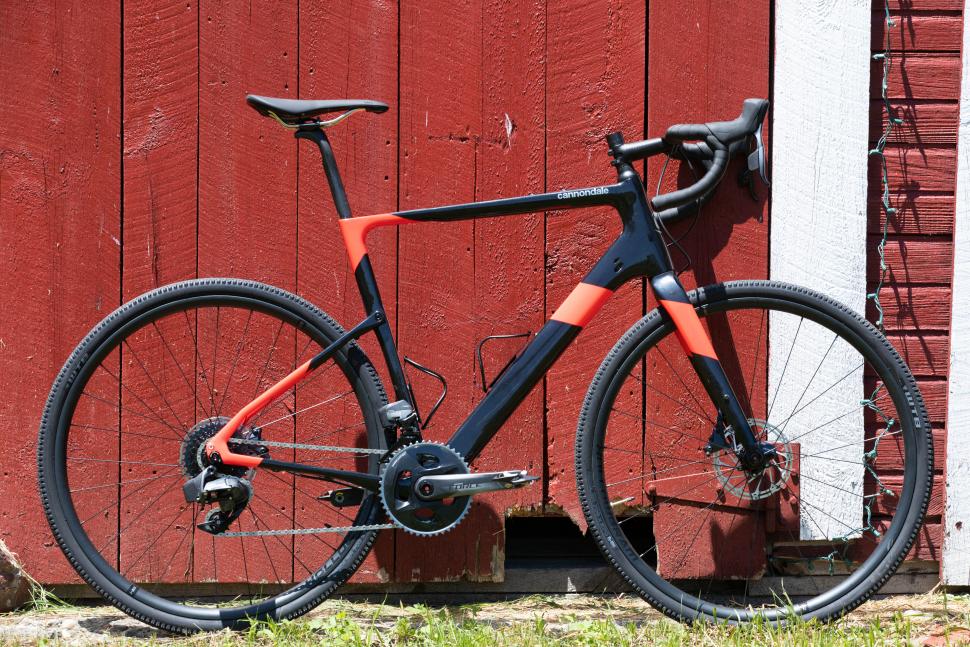
Add new comment
48 comments
"When the saddle is pushed down, it flexes the seat post and this, in turn, tries to bend the seat tube. Lowering the point at which the seat stays meet the seat tube allows the seat tube to bend more, increasing the range of movement at the saddle."
Is this right? How can the seat tube bend at all in a backwards direction, when the very top of the seat tube is connected to the top tube which must prevent any movement?
Motobecane had a dropped seatstay frame in the early 90s, called the MBK HPF (for 'high power frame'. Was this the first dropped seatstay bike?
Doesn’t have to be either/or does it? I’m lucky enough to have an elderly steel Genesis Flyer commuter singlespeed with v classic geometry and a fairly old BMC carbon racer weekender with the dropped stays. I love them both for different reasons.
Ferraroli was doing it ages ago in Switzerland, guess the market just wasn't ready for it. This bike had ultegra 6500 and 650c mavic heliums when I bought it so I am guessing the frame was from the late 90s. Not sure how it was marketed at the time (road or tri) but the bb is rather low and the back end is super short. Anyone seen an earlier example of dropped stays?
Unexpected side effect of the dropped stays on my Colnago Concept is that when i look down the stay is exactly in my line of sight to the cassette, so to see what gear im in i have to sort of look 'round' it. Maybe I'm just a funny shape. It drove me mad for the first few weeks but I'm prepared to forgive that minor gripe given the grin it puts on my face!
When the saddle is pushed down, it flexes the seat post and this, in turn, tries to bend the seat tube. Lowering the point at which the seat stays meet the seat tube allows the seat tube to bend more, increasing the range of movement at the saddle.
Wouldn't the whacking great top tube brace the seat tube so dropping the seat stays makes pretty much no difference to seat post flex ?
Nope.
Thanks for clearing that up.
Top-tube effectively pivots down slightly, not horizontally back (which wouldn't indeed work). They're generally "flatter" in drop-stay bikes (and others these days).
Why is this thought of from a push on the saddle? I don't bounce up and down while riding but I do ride over poor surfaces. So the impact is upwards from the rear hub. This will be transmitted through the seat stays. On a standard frame, that force goes to the seat tube / top tube joint, presumably (I didn't listen much in Mech Eng lectures) putting compression into the top tube.
The dropped seat stays will, by contrast, tend to bend the seat tube, and allowing a bit of that might make for a comfy ride.
But I agree with others, the effect of wide tyres will be somewhat more significant, and it's cheaper to do. I bought a Cannondale last year with a very conventional frame and once I've overcome my innate frugality, the 25mm tyres it came with will be replaced with the fattest I can fit.
I also guess that there are other cheapo approaches to add apparent compliance such as rubber in seat posts (perhaps in the saddle clamp area). But these are less profitable than persuading us that our arses really deserve fancy new frames.
Not sure of 'a push on the saddle' bit.. ? Impact will be via the front (rider goes slightly forward, then back, so expect some movement of the saddle and seat-post - and hence top-tube) and up through the rear (flatter seat stays here, along with lay-up, can aid the flex in the rear triangle).
Completely agree that a lot more comfort is easily available via fatter tyres, or other, far cheaper alternatives to a new frame - but I guess if you're buying a new one anyway, and it's priced pretty much the same, then not sure it matters much if it works. I was just replying to the comment about the top-tube not allowing the seat-post to move to any real degree.
FWIW I run an old (cheap) Trek Domane 2.x frame with the original ISOspeed decoupler in it, alongside a Wilier Izoard XP (an endurance model by their own billing, with FSA carbon seat-post and bars) - the Trek also has a skinny seat-post and forks designed to a bit more flex. The Trek seems much better over medium/bigger hits to the rear than the Wilier with the same tyres, not much difference on the front as far as I can tell.. same feeling compared with other hybrid (fatter tyres) and Canyon. Whether that's entirely to do with the decoupler or not, I don't know - but the end result is something that feels much better over more dodgy terrain, but much of a muchness over smooth roads. That was a fancy new frame when I got it, same price and a bunch of others with similar rolling stock spec, but as it didn't cost me any more I went through the information from Trek about it's testing, and feedback and features and took a punt - and seems to have paid off. So yeah, they were trying to get people to buy stuff with the promise of better X, Y or Z but ultimately I got something I value that works really well for me, so I don't see any problems, or bother with the global bike industry un-necessary feature creep conspiracy theories that some trott out (not saying you are at all, but it's depressingly common). Turns out some stuff actually does work like it's advertised.
The Retro-Grouch in me says they are pretty ugly, and maybe they make a slight diff in "comfort"... but not nearly as much as saddle choice, tires, wheels, bar tape, gloves, nice bibs, etc. Also on my big ugly list: cranksets have become just hideous looking! Yes I'm grouchy..... but I do LOVE my disc brakes and electronic shifting, so there!
I have both a TCR and a dropped seatstay bike and overall the TCR is a little less comfortable. BUT. With the TCR it's easy to change the compliance by changing the seatpost. It's ’extreme' length means the difference can be huge.
Compared to conventional frames I have had in the past they are both much better with rear end comfort.
Mostly though, the biggest improvement comes from bigger tyres. Seems to me, given where we are now, tyre clearance is probably the more important factor.
And where are we now exactly? Possibly at the start of a compliance revolution if approaches like the Topstone and this year's GT Grade start appearing on road frames. 🤞
My TCR is very comfortable thank you, not dropped seatstays but a dropped top tube
I'm a fan of traditional bike geometry but I like the look of dropped seat stays too. They give the bike a purposeful air, like it's crouched ready to spring, somehow.
I don't see how the design allows the seat tube to flex more: it seems to me that for this to happen the top tube would have to stretch. However, I can believe that because vibrations from the rear axle will have further to travel before they reach the rider there's more chance of them being damped.
Just to counter the "I haven't ridden one, but..." brigade.
I bought a Cube without dropped seatstays lat year, exchanged it a few weeks later for a BMC with dropped seatstays.
The BMC is faster and more comfortable. It's a better bike in ever way despite having similtar components (actually slightly lower spec).
This is obviously because of the dropped seat stays and couldn't possible be down to any other factor.
It looks better too.
Love ya work.
Surely a Cube wouldn't have been aerodynamic? Or is Cube a brand name knot shaped similar to other bikes?
Amazingly (or not) one of the most efficient leading surfaces of an aerodynamic , had to dynamic (fluid median /spell checker) is a flat wall!
Weird aye. A tapered edge. ) Resulting is a same median to median friction bearing with overflow passing along an edge tapered to point at a slipped stream.
) Resulting is a same median to median friction bearing with overflow passing along an edge tapered to point at a slipped stream.
Eg. If you take a point on a sphere and expand such without alterations to the spheres surface you discover something plain:A flat wall.
Thus pressurized median goes high (how you doing.. Like the face of a Cube
I'd buy another GT.. Regarding performance? Not sure.. They look great though. I also think modern welds hold strong too
I've never ridden one, but I think they look absolutely terrible.
100% this
Dropped seat stays are aesthetically awful, but that's just my opinion.
Yep, Fugly!
Dropped seatstays because they're infinitismaly more aerodynamic, but can be marketed as such, thus becoming a more attractive product. Too appealing for a big brand not to go down this road, when you can differentiate one bike from others in the lineup and not have them cannibalize sales from each other. Don't like 'aero' road bike? Get the 'non-Aero' road bike. Vice versa. It's just another example of corporate product diversification, more choices driven by sales analytics. Which sucks, but good for the industry if it means more people on bikes.
Why not keep dropping the stays for even more stiffness, slam that top tube as well while we're at it. This has got to be the lightest, stiffest and most aero frame I've ever seen
AE69CCA9-70EF-45B7-9EF9-0B6BD480D9E6.jpeg
Here's what I ride.
I don't understand geometry. It's simply a 60cm top tube c-c frame and it's super comfortably suited to long rides.
Too me it'd be daft, collect draft and punish me with shaft if the stays braced high.
More weight, more material, more windage plus a triangle with angles tending towards beyond acute.
When he starts to run, my arse gets pounded if not spinning to keep, I want every comfort I can get. To every force there is (an)opposite equal reaction. Not sure about an tho. Eg. A=B+C +2 Nth degree.
Yet I'm fairly certain that there are advantages with high stays as well as advantages with lower bracing.
Most bicycle manufactures know how to design bikes and... Just a fan of cushioned arse man. (Rythmes, not sure if true. A jist of time, welcome to crew, just a commuter bike dude, had to modify usage designed as because I'm too am rude).
Most are building bikes properly, all the same yet all different.
Just noting.. Sure you'd want the triangle barrel pointed up ya lovelies rather than aligning to tension drive?
Sometimes yes
Screenshot_20191020-121302_Gallery.jpg
You'll get much more "compliance" by changing the stiffness of the tubes than you ever will by dropping a seat stay. In fact you'll have to use a stiffer seat tube to resist any unsupported load
Just for the record the BMC SLR01 (2011), with dropped seat stays, pre dated the BMC Impec by a few years. Wether due to the dropped seat stays or not my 2011 SLR 01 is much more comfortable than my previous BMC SLT 01.
According to BMC the dropped seat stays allow for more flex in the seat post which provides the comfort as well as having ‘flat shaped ’ seat stays which also allow some flex.
Well the first bit I can't beleive - do BMC have some data on the amount of flex between designs and how much that is due to the stays and how much down to the actual seatpost design? You know the seapost that is wider to reduce sideways flex than it is back to front so it can flex more fore/aft, which is nothing to do with the stays has it?? So, given the design of the seatpost was meant to increase fore/aft flex, how does a shorter/lower down seat stay change the flex of a seatpost to change comfort in any meaningful way?
And the second bit is surely purely on the design of the stay itself, so you can't have a flat stay and say well it's because it's shorter that it's more 'compliant' when actually it's because of the redesign of the stay itself that changes matters as well as the composition of the stay, i.e. the material itself is not identical. The SLR01 is not the same design as the SLT01 is it, the SLT doesn't have TCC designed tubes and forks does it, you know that stands for Tuned COMPLIANCE Concept, big hint as to why the frame itself might be more compliant as it uses different materials and design, again nothing to do with the shorter/lower down stay itself.
However Philipe Gilbert stated in testing of the SLR01 that it was stiffer in every direction, the video is on youtube with him saying this.
Material changes in design tube profile and composition may well change 'comfort' (As TCC is meant to do), as might different seatpost(again the evidence proves this is making the flex not the stay position), saddle, tyres. wheels, tyre pressures on any given day, wheelbase, handlebars, stem and even the obvious changes in the SLR01 at the headstock which are hugely different in terms of comfort, and let's face it, former World Champion Gilbert says the SLR01 was a stiffer bike, I think I'd rather take the word of a WC over anyone else on the matter.
Shorter seatstays in themselves do not equal more compliance IMO, there's no actual evidence to support this that I can see. What is evidential is that change in tube design, materials (including fibre direction) and overall frame design including post and the headstock do improve comfort.
Too true Aussie Rider, I had the BMC SLR01 (2012) it was my first return to road bikes (since I was a kid) after 'retiring' from Sunday league football. Loved the frame design & feel of the ride, all of the different frame tubes seemed quite unique at the time & have gradually appeared with other brands. My only gripe though was that it didn't take anything above 23mm tires.
A dropped seat stay would have to join the seat tube much lower down than any of those for the dropped seat stay by itself to increase the compliance of the rear of the frame.
You're qualified to tell us what we have and haven't ridden?
Pages